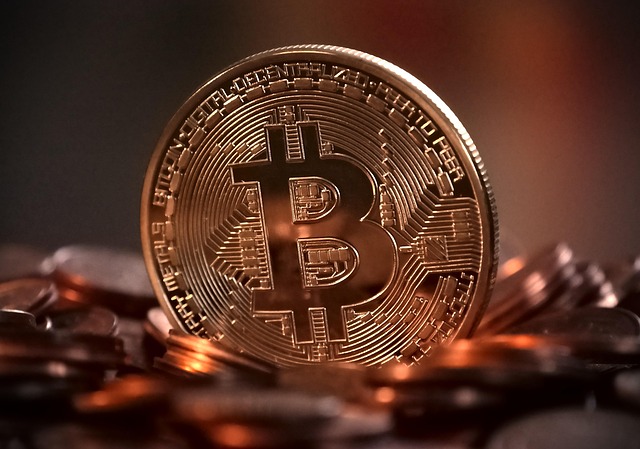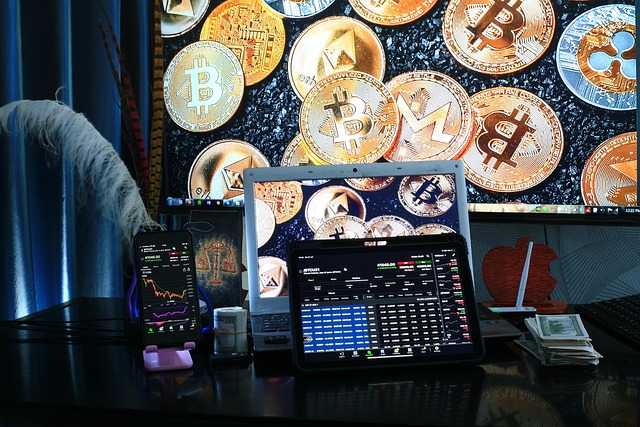XRP: Why it’s outperforming altcoins — and what comes next
Over the past year, most altcoins have struggled to keep up with Bitcoin, but one project is breaking away from the pack: XRP.While other tokens have stagnated or slid, XRP (XRP) has surged more than 300% in just six months against Bitcoin (BTC) to quickly become one of the best-performing assets in the crypto space. But what’s really behind this rally — and more importantly, can it last?Some say it’s the fundamentals finally shining through. Others argue it’s just hype and speculation driven by a passionate community. Then there’s the legal, political, and institutional side of things — factors that could have a far greater impact on XRP’s trajectory than many realize.In Cointelegraph’s latest video, we dive deep into the forces driving XRP’s recent performance, the growing institutional interest, and the potential game-changing developments on the horizon. From exchange-traded funds (ETFs) and stablecoins to regulation and Ripple Labs’ evolving strategy, this video breaks it all down.Whether you’re an XRP holder, a skeptic, or just trying to make sense of the altcoin market in 2025, this is a video you don’t want to miss.Check out the full breakdown on our YouTube channel — and make sure to subscribe for future updates.
Bitcoin miner Bit Digital acquires $53M facility as AI, HPC push continues
Bitcoin mining company Bit Digital has acquired an industrial building in Madison, North Carolina, upping the ante in a business diversification strategy that includes strategic pivots into AI and high-performance computing. Bit Digital agreed to buy the property for $53.2 million through Enovum Data Centers Corp., the company’s wholly owned Canadian subsidiary, regulatory filings show. The investment includes a $2.25 million initial deposit, with $1.2 million being non-refundable. The transaction is expected to close on May 15.Bit Digital disclosed the acquisition in a Form 8-K filed with the US Securities and Exchange Commission. Source: SECBit Digital’s regulatory filing was submitted around the same time that it announced a new Tier 3 data center site in Quebec, Canada, which will support the company’s 5 megawatt colocation agreement with AI infrastructure provider Cerebras Systems. The Quebec facility is being retrofitted with roughly $40 million in upgrades to meet Tier 3 standards — strict requirements that ensure high reliability for critical systems and continuous operation.Bit Digital CEO Sam Tabar said at the time that the Quebec operation “represents continued momentum in our strategy to deliver purpose-built AI infrastructure at scale.”Related: Auradine raises $153M, debuts business group for AI data centersMiners under pressure to diversifyFaced with volatile crypto prices and a quadrennial Bitcoin halving cycle that squeezes revenues, several mining firms have leveraged their existing infrastructure to pivot to other data-intensive workloads. Mining companies like Hive Digital say AI data centers offer potentially higher revenue streams than crypto mining. In the latest sign of economic pain, public Bitcoin miners sold more than 40% of their Bitcoin (BTC) holdings in March, according to data from TheMinerMag publication. Public miners that can’t keep their costs under control struggle the most in maintaining their Bitcoin operations, placing more pressure on executives to seek out alternative revenue streams.An October report by CoinShares suggested that the least profitable miners are more likely to shift gears to AI and other workloads. The cost per Bitcoin is an important metric for mining companies, which have struggled to remain profitable in a post-halving environment. Source: CoinSharesRelated: SEC says proof-of-work mining does not constitute securities dealing
5 reasons why FARTCOIN is rising faster than everything else
Fartcoin (FARTCOIN), a Solana-based memecoin launched in October 2024, has soared over 370% from its yearly low, outperforming Bitcoin (BTC) even as global trade tensions weigh on broader risk assets.These are the five key reasons why FARTCOIN is rising faster than top cryptocurrencies.FARTCOIN/USDT vs. BTC/USD 30-day price chart comparison. Source: TradingViewPEPE boom similarities fuel FARTCOIN hypeFARTCOIN’s recent surge mirrors the early stages of Pepe’s (PEPE) meteoric rise.In 2023, PEPE launched with a rapid ascent to a $1.8 billion market cap before crashing down to $255 million, according to the PEPE/WETH weekly chart. From there, it bottomed out, consolidated, and then entered a second, even more powerful rally that carried it beyond a $4 billion valuation.PEPE/WETH weekly performance chart. Source: DEX Screener/MacroCRGThe euphoric pump, harsh correction, and quiet accumulation phase look similar to what FARTCOIN is showing now.The Solana memecoin peaked near $2.4 billion earlier this year before undergoing a brutal drawdown. Its valuation dropped to around $365 million, forming a rounded bottom pattern.FARTCOIN/SOL weekly price chart. Source: DEX Screener/MarcoCRGFrom there, FARTCOIN has steadily climbed back, reaching about $949 million this week. That is strikingly similar to PEPE’s post-hype accumulation phase in 2023.“I genuinely think there’s a chance Fartcoin repeats the PEPE playbook and pulls some crazy multiples from here,” wrote market analyst MacroCRG, citing the PEPE memecoin fractal.Fartcoin’s social media hype spikes 500%FARTCOIN appears to be riding a fresh wave of speculative mania, with social media metrics revealing a sharp rise in online activity.FARTCOIN’s social volume (orange line) surged by nearly 500% in early April, preceding its 100%-plus gains in the month, according to data resource LunarCrush. As of April 17, the engagement had cooled slightly, albeit remaining elevated at 177% above baseline.FARTCOIN social volume, dominance and contributors 30-day chart. Source: LunarCrushSocial dominance (purple) and social contributors (blue) have both trended higher, up 162% and 136%, respectively.Rising social media activity in crypto markets often correlates with increased speculative interest, particularly in meme-driven assets. While not a guaranteed indicator of future price action, a surge in social metrics can reflect growing community engagement and heightened visibility, factors that are now coinciding with sharp moves in FARTCOIN.Fartcoin OI jumps over 500%Fartcoin’s open interest (OI) in the futures market has jumped by around 504% so far in 2025, according to data resource CoinGlass. A rising OI indicates a massive influx of capital and attention from traders.FARTCOIN futures open interest. Source: CoinGlassIn contrast, Bitcoin’s OI has declined by 10.5% during the same period, reflecting reduced speculative interest in the leading crypto asset.Adding to the bullish case, FARTCOIN’s funding rates have remained largely positive throughout April, showing that more traders are betting on the price going up than down. FARTCOIN funding rates (8-hour). Source: CoinGlassPeriods of negative funding rates in the FARTCOIN futures market have consistently aligned with disproportionately large short liquidations, highlighting the risks of betting against this popular memecoin.A clear example occurred on April 9, when FARTCOIN’s eight-hour funding rate plunged to -0.023%, signaling a wave of bearish sentiment as traders aggressively shorted the token.FARTCOIN funding rates and liquidation charts. Source: CoinGlass But in a classic short squeeze, FARTCOIN surged by nearly 50% the same day, triggering $9.16 million in short liquidations, compared to just $2.52 million in longs.This stark imbalance underscores a growing pattern: When too many traders lean bearish, FARTCOIN often moves sharply against them. As a result, short sellers appear to be treading carefully, as excessive pessimism has repeatedly backfired, turning negative funding into a setup for explosive upside moves.Fartcoin is founderlessFartcoin’s rise reflects more than just meme-fueled hype—it stems from a unique narrative that actively blends AI innovation with internet absurdity.New Zealand-based AI researcher Andy Ayrey created an AI agent called the Terminal of Truth, which conceived Fartcoin as part of an experiment in merging artificial intelligence with blockchain humor. Source: XThis unusual origin story has caught the attention of traders looking to capitalize on the intersection of AI and crypto, positioning Fartcoin as more than just a typical memecoin.“Unlike most AI plays, it lives free of the execution risks and technical complexity of infra tokens *and* free of the fatigue and noise around tokenized agents,” wrote analyst Ben in December 2024, adding: “This simplicity coupled with absurdity is the perfect recipe for reflexivity: higher price = higher absurdity = higher attention = higher price.”Fartcoin’s team continues to build its brand around viral internet culture, planning a Goatse-inspired film to further fuel engagement. It pushes the absurdity even further by incorporating a digital fart sound into its “Gas Fee” system—turning transaction costs into a deliberately crude punchline that reinforces its meme-first identity.Source: XIn doing so, Fartcoin has leveraged novelty and narrative to attract speculative capital without relying on a roadmap, founder figure or utility. This strategy possibly explains why it has continued to gain momentum while many other tokens stall.Fartcoin price technicals hint at 100% gains nextFARTCOIN’s price rally also has strong technical backing. The four-hour chart of FARTCOIN/USDT shows an inverse head-and-shoulders pattern, a classic bullish reversal signal that often marks the end of a downtrend and the beginning of a sustained upward move.This formation includes a left shoulder formed in early February, a deeper head in mid-March, and a right shoulder in early April, all anchored around a horizontal neckline around $0.63.FARTCOIN/USDT four-hour price chart. Source: TradingViewThe pattern confirmed its breakout on April 10 when FARTCOIN surged above the neckline with strong volume. Following the breakout, the price has held above key moving averages — the 50-EMA and 200-EMA — while consolidating just under the $0.90 level.Based on the distance from the head to the neckline, the measured move projection points to an upside target near $1.96, up by over 100% compared to current price levels.This breakout adds a layer of technical confirmation to the ongoing rally, supporting the view that FARTCOIN’s momentum is narrative-driven and structurally supported by bullish chart patterns.This article does not contain investment advice or recommendations. Every investment and trading move involves risk, and readers should conduct their own research when making a decision.
Raydium debuts LaunchLab to rival memecoin maker Pump.fun
The firm behind the Solana-based automated market maker (AMM) Raydium has launched its memecoin-making protocol, LaunchLab, which looks to compete with Pump.fun.The arrival of LaunchLab on April 16 comes a month after Pump.fun, previously a key contributor to Raydium’s revenue, severed ties with the firm by moving its token migration from Raydium’s liquidity pools to its own new decentralized exchange, PumpSwap.LaunchLab will leverage Raydium’s liquidity pools and aim to dethrone Pump.fun as the leading Solana memecoin launchpad.Raydium said LaunchLab provides memecoin enthusiasts with customizable bonding curves and no migration fees, while tokens that raise 85 Solana (SOL) — currently worth $11,150 — will transition to Raydium’s AMM instantly.Around 10 LaunchLab tokens have already surpassed this threshold, according to the LaunchLab platform.Raydium said tokens can be launched for free and creators can opt-in to earn 10% of trading fees from the AMM pool post-graduation.Source: RaydiumLaunchLab trading fees are set at 1%, and 25% of those fees will be used for Raydium (RAY) buybacks.Related: Trump’s next crypto play will be Monopoly-style game — ReportThe news triggered a near 14% price surge of the RAY token, pushing it up to $2.41 four hours after the announcement before falling back to $2.21 at the time of writing, CoinGecko data shows.PumpSwap volume on a tearPumpSwap’s daily record in trading volume has now been broken five days in a row after posting $460 million on April 17.The April 17 tally narrowly edged out the $454.9 million in trading volume seen on April 16, making it the fourth consecutive day above $400 million.Daily change in trading volume on PumpSwap since March 22. Source: DefiLlamaPumpSwap has now processed $7.3 billion worth of volume since it launched on March 22, DefiLlama data shows.Magazine: Memecoin degeneracy is funding groundbreaking anti-aging research
Court grants 60-day pause of SEC, Ripple appeals case
An appellate court has granted a joint request from Ripple Labs and the Securities and Exchange Commission (SEC) to pause an appeal in a 2020 SEC case against Ripple amid settlement negotiations.In an April 16 filing in the US Court of Appeals for the Second Circuit, the court approved a joint SEC-Ripple motion to hold the appeal in abeyance — temporarily pausing the case — for 60 days. As part of the order, the SEC is expected to file a status report by June 15.April 16 order approving a motion to hold an appeal in abeyance. Source: PACERThe SEC’s case against Ripple and its executives, filed in December 2020, was expected to begin winding down after Ripple CEO Brad Garlinghouse announced on March 19 that the commission would be dropping its appeal against the blockchain firm. A federal court found Ripple liable for $125 million in an August ruling, resulting in both the SEC and blockchain firm filing an appeal and cross-appeal, respectively.However, once US President Donald Trump took office and leadership of the SEC moved from former chair Gary Gensler to acting chair Mark Uyeda, the commission began dropping multiple enforcement cases against crypto firms in a seeming political shift. Ripple pledged $5 million in XRP to Trump’s inauguration fund, and Garlinghouse and chief legal officer Stuart Alderoty attended events supporting the US president.Related: SEC dropping Ripple case is ‘final exclamation mark’ that XRP is not a security — John DeatonDespite support for the end of the case coming from both Ripple and the SEC, the August 2024 judgment and appellate cases leave some legal entanglements. Alderoty said in March that Ripple would drop its cross-appeal with the SEC and receive a roughly $75 million refund from the lower court judgment. It’s unclear what else may result from negotiations over a settlement in appellate court.New leadership at SEC incomingActing chair Uyeda is expected to step down following the US Senate confirming Paul Atkins as SEC chair on April 9. During his confirmation hearings, lawmakers questioned Atkins about his ties to crypto, which could create conflicts of interest in his role regulating the industry. In financial disclosures, Atkins stated he had millions of dollars in assets through stakes in crypto firms, including Securitize, Pontoro and Patomak. Magazine: SEC’s U-turn on crypto leaves key questions unanswered
Real estate fintech Janover doubles Solana holdings with $10.5M buy
Real estate-focused financial technology firm Janover has acquired 80,567 Solana tokens for roughly $10.5 million.According to an April 15 announcement, with its latest purchase, Janover’s Solana (SOL) holdings reached 163,651.7 — worth about $21.2 million, including staking rewards. With this investment, the amount of Solana per each of the 1.5 million shares reached 0.11 SOL, valued at $14.47 — an increase of 120%.Janover stock price chart. Source: Google FinanceJanover plans to start staking the newly acquired SOL immediately to generate additional revenue. The announcement follows the company raising about $42 million with the expressed intent to enhance its digital asset treasury strategy.The new capital was raised in a convertible note and warrants sale from Pantera Capital, Kraken, Arrington Capital, Protagonist, The Norstar Group, Third Party Ventures, Trammell Venture Partners and 11 angel investors. At the same time, a team of former Kraken executives has taken control of the company.Joseph Onorati, former chief strategy officer at Kraken, stepped in as chairman and CEO at Janover following the group’s purchase of over 700,000 common shares and all Series A preferred stock. Related: Real estate firm Fathom can now add Bitcoin to its balance sheetAltcoins on the balance sheet?Janover is one of the latest companies to decide to add digital assets to their corporate treasury. What makes it an outlier is the decision to accumulate an asset that is not Bitcoin (BTC).The most notable example of a Bitcoin-accumulating firm is Strategy (formerly MicroStrategy). Strategy is a publicly traded business intelligence company founded as MicroStrategy in 1989.In 2020, the firm pivoted to acquiring as much Bitcoin as possible. Strategy now holds well over 2.5% of all Bitcoin that will ever be produced.Related: Bitcoin on corporate balance sheets: What’s the risk and reward?Bitcoin dominates balance sheetsBitcoinTreasuries.NET data shows that Strategy holds 528,185 BTC worth nearly $44.2 billion at the time of writing. The company has leveraged debt to accumulate its Bitcoin.Another example of a company that is now focused on accumulating Bitcoin is Metaplanet, often referred to as “Japan’s MicroStrategy.” Both companies hold Bitcoin as a hedge against inflation and as part of a broader strategy to diversify and modernize their treasuries.According to some analysts, this strategy may soon pay off. Bitcoin is showing growing resilience to macroeconomic headwinds compared with traditional financial markets, according to a recent Wintermute report. Still, not everyone is convinced that the trend will hold, with the founder of Obchakevich Research, Alex Obchakevich, saying:“As the trade war intensifies, Bitcoin may return to the list of risky assets. Because investors will most likely look for salvation in gold.“Magazine: Bitcoin eyes $100K by June, Shaq to settle NFT lawsuit, and more: Hodler’s Digest, April 6 – 12
Bitcoin’s wide price range to continue, no longer a ‘long only’ bet — Analyst
Bitcoin could be heading into another extended consolidation phase, with short-term indicators suggesting a more bearish outlook, contrary to the broader crypto community’s view, according to the head of research at 10x Research.While many crypto analysts predict new Bitcoin (BTC) all-time highs by June, Markus Thielen said in an April 14 markets report that he is skeptical, pointing out that onchain data signals “more of a bear market environment than a bullish one.”Short-term indicators signal potential market topThielen said the Bitcoin stochastic oscillator — which compares a particular closing price to a range of prices over a specific period to determine momentum — shows patterns “more typical of a market top or late-cycle phase rather than the early stages of a new bull run.”Bitcoin is trading at $83,810 at the time of publication. Source: CoinMarketCap“As a result, short-term signals are not aligning with longer-term indicators, highlighting the disconnect in the market outlook,” Thielen said.“Bitcoin is no longer a parabolic ‘Long-Only’ retail-driven market,” he added, explaining it now “demands a more sophisticated, finance-oriented approach.”“Bitcoin’s rally over the past year hasn’t been driven by typical ‘crypto-bro’ speculation but by long-term holders seeking diversification and adopting a buy-and-hold strategy,” Thielen said. Over the past 12 months, Bitcoin is up 32.80% and is trading at around $83,810 at the time of publication, according to CoinMarketCap.Bitcoin price action may repeat 2024 patternThielen reiterated his stance that Bitcoin may consolidate for an extended period, much like it did in 2024. “Despite our cautious optimism, we view Bitcoin as trading within a broad range of $73,000 to $94,000, with a slight upward bias,” he said.In March 2024, Bitcoin reached its then-all-time high of $73,679 before entering a consolidation phase, swinging within a range of around $20,000 until Donald Trump won the US elections in November.Related: Bitcoin price recovery could be capped at $90K — Here’s whyMany crypto analysts are eyeing June as the month when Bitcoin could surpass its current all-time high of $109,000, which it reached in January just before Trump’s inauguration.Swan Bitcoin CEO Cory Klippsten told Cointelegraph in early March that “there’s more than 50% chance we will see all-time highs before the end of June this year.”Sharing a similar view, Bitcoin network economist Timothy Peterson and Real Vision chief crypto analyst Jamie Coutts have also marked June as when Bitcoin could reach a new high.“It is entirely possible Bitcoin could reach a new all-time high before June,” Peterson said.Meanwhile, Coutts said, “The market may be underestimating how quickly Bitcoin could surge – potentially hitting new all-time highs before Q2 is out.”Magazine: Riskiest, most ‘addictive’ crypto game of 2025, PIXEL goes multi-game: Web3 GamerThis article does not contain investment advice or recommendations. Every investment and trading move involves risk, and readers should conduct their own research when making a decision.
Red flag? Mantra's TVL jumped 500% as OM price collapsed
The total-value-locked (TVL) on Mantra’s RWA blockchain protocol reached a yearly high despite OM’s 90% price crash.Mantra TVL surges 500% following OM’s crashAs of April 15, Mantra’s TVL (in OM terms) jumped to 4.21 million OM (~$3.24 million), an increase of over 500% from two days prior, according to data resource DefiLlama.Mantra’s cumulative TVL chart. Source: DefiLlama.Interestingly, the TVL rise accompanied a dramatic collapse in OM prices, which plunged over 90% during the weekend. The Mantra team attributed the sell-off to “reckless forced liquidations” initiated by centralized exchanges.A rising TVL typically indicates that users are locking more tokens into a protocol’s smart contracts via staking, liquidity pools, lending, or farming for yield or network participation. Analyst DOM spotted “aggressive buying” on crypto exchanges during the 90% OM price crash on April 13, amounting to $35 million worth of OM purchases when “the [Mantra] collapse was happening.” Mantra total aggregated spot CVD vs. Binance spot price. Source: DOMDespite the 90% price crash, the simultaneous TVL spike and “aggressive buying” suggest that certain participants saw the collapse as a buying opportunity. The fact that millions of dollars were deployed while the crash unfolded points to tactical accumulation, possibly by whales, insiders, or opportunistic speculators betting on a rebound or farming incentives.As of April 15, OM’s price was trading for as high as $0.99, up around 170% from the weekend lows.OM/USDT daily price chart. Source: TradingView97% of Mantra TVL is one DApp Increases in Mantra’s TVL accompany red flags.For instance, around 97% of Mantra’s TVL growth came from Mantra Swap, the protocol’s native decentralized exchange. Its automated market-making pools accounted for 4.11 million OM in TVL, making it the primary driver behind the sharp uptick.Mantra Swap TVL performance chart. Source: DefiLlama A more decentralized ecosystem would have a greater capital distribution with multiple liquidity sources across lending markets, staking platforms, derivatives, etc. Related: Mantra says one particular exchange may have caused OM collapseAdditionally, Mantra’s fully diluted valuation (FDV) of $1.88 billion as of April 15 dwarfs the total value locked (TVL) of $3.24 million, a glaring disconnect that could signal potential overvaluation.Mantra TVL vs. FDV (in dollar terms). Source: DefiLlamaWith only 0.17% of its theoretical value actively deployed in its ecosystem, the protocol shows low capital efficiency and limited real-world usage. This imbalance suggests the market cap is likely driven more by speculation than adoption, and with a large portion of tokens likely still locked, there’s a high risk of future dilution as vested tokens are unlocked.Analyst JamesBitunix posed Mantra’s FDV as a huge risk to OM dip buyers, saying:“A lot of traders jumped in at this ‘bottom’ — both on spot and with leverage. Personally, I’d trigger another correction — preferably a sweep of the lows followed by a quick bounce.”This article does not contain investment advice or recommendations. Every investment and trading move involves risk, and readers should conduct their own research when making a decision.
Bitcoin trader doubts breakout 'significance' as BTC price nears $87K
Bitcoin (BTC) eyed new April highs at the April 15 Wall Street open amid skepticism over BTC price strength.BTC/USD 1-hour chart. Source: Cointelegraph/TradingViewBitcoin price faces multiple resistance hurdlesData from Cointelegraph Markets Pro and TradingView showed BTC/USD seeking to break through $86,000.Continued strength through the weekend had set up the pair for an attack on levels closer to $90,000, these absent since early March.Concerns over macroeconomic volatility, with the US trade war at its center, nonetheless kept market participants from calling an end to the Bitcoin bull market correction.“It’s funny watching sentiment shift so quickly – just days ago everyone was calling for 50k, now they’re rushing to flip bullish at the first green candle. This emotional rollercoaster is exactly why most traders lose money,” trading resource Stockmoney Lizards wrote in part of its latest analysis on X.“While short-term momentum appears bullish, we still face multiple resistance hurdles before confirming the correction is complete.”BTC/USDT perpetual contract 2-day chart. Source: Stockmoney Lizards/XStockmoney Lizards saw rangebound BTC price action continuing prior to a retest of the most significant longer-term resistance nearer $100,000.“My outlook remains cautiously optimistic – expect continued ranging between 78-88k for several weeks as Bitcoin builds energy for its next move,” they forecast. “Once we clear the 97k zone, the path to 110k+ becomes much more viable by late summer.”Brandt: BTC trendline break is not “transition of trend”A key topic of conversation among traders was a BTC price breakthrough attempt focusing on a multimonth downward trend line.Related: Can 3-month Bitcoin RSI highs counter bearish BTC price ‘seasonality?’As Cointelegraph reported, this has been in place since BTC/USD set its current all-time highs in January. Now, its status as resistance appears to be waning.It didn’t break a multimonth downtrend just for $86K, it wants to challenge for a higher high near the 200 MA,” popular trader SuperBro summarized in part of a recent X update.SuperBro referred to the 200-day simple moving average (SMA), a classic bull market support trend line, currently at $87,566.“If the HH is successful, which is likely imo, then it can retrace for a HL anywhere above the low before it runs for the wedge target above $100K,” he added.BTC/USD 1-day chart. Source: SuperBro/XNot everyone, however, was convinced that breaking the downtrend would mark a watershed moment for Bitcoin bulls.For veteran trader Peter Brandt, nothing could be gained from observing price behavior around the trend line.“Of all chart construction, trendlines are the LEAST significant,” he told X followers on the day. “A trendline violation does NOT signify a transition of trend $BTC.”BTC/USD 1-day chart. Source: Peter Brandt/XThis article does not contain investment advice or recommendations. Every investment and trading move involves risk, and readers should conduct their own research when making a decision.
Crypto’s debanking problem persists despite new regulations
The crypto industry’s inability to access banking services still concerns many industry observers despite recent policy victories.In past years, financial services firms and banks concerned about fiduciary risk, reporting liabilities and reputational risk often would refuse to offer service to crypto firms — i.e., “debanking” them. Legislative efforts in the United States and Australia are attempting to remove these barriers for the crypto industry. In the former, legislators repealed guidelines that made it difficult for banks to custody crypto assets, as well as those stating that crypto carried “reputational risk” for banks. In the latter, the Labor Party has introduced a bill to create a legal framework for crypto, giving banks the clarity they need to interact with the crypto industry.Despite these tangible efforts, some crypto industry observers say that the crypto’s debanking problem is far from over. US crypto execs say debanking is still an issue The crypto industry has long decried “Operation Chokepoint 2.0,” its nickname for a suite of policies that they claim constrained the crypto industry from growing under the administration of former President Joe Biden. Among these were measures making it more difficult for crypto firms to access banking services. The early days of the second administration of President Donald Trump have seen many of these repealed or changed. One of the first was the repeal of Staff Accounting Bulletin 121, which required banks offering custody for customers’ cryptocurrencies to list them as liabilities on their balance sheets — this made it very difficult for banks to justify offering such services. The administration also appointed a new head of the Office of the Comptroller of the Currency (OCC), Rodney Hood. Dennis Porter, CEO of the Bitcoin-focused policy organization Satoshi Action, told Cointelegraph that under Hood’s tenure, the OCC has already said banks can offer crypto-related services like custody, stablecoin reserves and blockchain participation.Related: Atkins becomes next SEC chair: What’s next for the crypto industry“This opens the door for broader adoption of digital asset technology and custodial services by traditional financial institutions, signaling a major shift in how banks engage with crypto,” he said.Despite these victories, Caitlin Long, founder and CEO of Custodia Bank, said on March 21 that debanking is likely to remain a problem for crypto firms into 2026. Long said the non-partisan board of governors of the Federal Reserve is “still controlled by Democrats,” alluding to Democrats’ more skeptical stance on crypto. Long claimed that “there are two crypto-friendly banks under examination by the Fed right now, and an army of examiners was sent into these banks, including the examiners from Washington, a literal army just smothering the banks.”Long noted that Trump won’t be able to appoint a new Fed governor until January, meaning that, while other agencies may be more crypto-friendly, there are still roadblocks. Australia’s Labor Party to create crypto frameworkStand With Crypto, the “grassroots” crypto advocacy organization started by Coinbase that has spread to the US, UK, Canada and Australia, said that “in Australia, debanking is quietly shutting out innovators and entrepreneurs — particularly in the crypto and blockchain space.”In a post on X, the organization claimed that debanking results in “reputational damage, loss of revenue, increased operational costs, and inability to launch or sustain services.” It also claimed that it forces some companies to move offshore. In response to these concerns, the ruling center-left Labor Party in Australia has proposed a new set of laws for the cryptocurrency industry. The changes to current financial services law seek to tackle the issue of debanking in the country’s cryptocurrency industry.Australia’s Treasury says its new crypto regulations have four priorities. Source: Australian Department of the TreasuryEdward Carroll, head of global markets and corporate finance at MHC Digital Group — an Australian crypto platform — told Cointelegraph that in Australia, debanking decisions were “not the result of regulatory directives.”“Rather, they appear to stem from a more general sense of risk aversion due to the current lack of a clear regulatory framework.”Related: US gov’t actions give clue about upcoming crypto regulationCarroll was optimistic about the Labor Party’s proactive stance. The major political parties were “showing a shift in sentiment and a shared commitment to establishing formal crypto regulation.” “We are hopeful that this will give banks the confidence to reengage with crypto businesses that meet compliance standards,” he said.Canada unlikely to relieve crypto firmsIn Canada, “debanking remains a serious and ongoing challenge for the Canadian crypto industry,” according to Morva Rohani, executive director of the Canadian Web3 Council.“While some firms have successfully established relationships with banking partners, many continue to face account closures or denials with little explanation or recourse,” she told Cointelegraph. While debanking actions aren’t explicit, financial institutions’ interpretation of Anti-Money Laundering and Know Your Customer regulations “creates a risk-averse environment where banks weigh compliance and reputational concerns against the relatively low revenue potential of crypto clients.”The end result, per Rohani, is a systemic debanking problem for the digital assets industry.But unlike in the US and Australia, the Canadian crypto industry may not find relief anytime soon. Prime Minister Mark Carney, whose more crypto-skeptic Liberal Party is surging in the polls ahead of the April 28 snap elections, is himself a crypto-skeptic.Polls show Carney firmly in the lead. Source: IpsosCarney has stated that the future of money lies more in a “central bank stablecoin,” otherwise referred to as a central bank digital currency.Rohani said that “no comprehensive legislative solution has been implemented” as regards to debanking. “A more structured approach, including mandated disclosure of reasons for account termination and regulatory oversight, is needed,” she said.Critics claim crypto is “hijacking” the debanking issueThere is another side to the debanking debate, which claims that crypto’s debanking “problem” is a non-issue or a vehicle for crypto firms to get what they want in terms of regulation. Molly White, the author of Web3 Is Going Just Great and the “Citation Needed” newsletter, has noted that, in the US at least, crypto firms have claimed to be victims of debanking while lauding Trump’s efforts to end protections for debanking at the same time.In a Feb. 14 post, White stated that the crypto industry had “hijacked” the discussion around debanking, which contains legitimate concerns regarding access to financial services — particularly regarding discrimination due to race, religious identity or industry affiliation. She claims the crypto industry has used debanking as a means to deflect legitimate regulatory inquiries into crypto companies’ compliance efforts. Further of note is the fact that Coinbase CEO Brian Armstrong has applauded the efforts of the Department of Government Efficiency (DOGE), with Elon Musk at the helm, to dismantle the Consumer Financial Protection Bureau (CFPB). One of the CFPB’s responsibilities is to investigate claims of debanking. But when DOGE instructed the agency to halt all work, Armstrong said it was “100% the right call,” in addition to making dubious claims about the agency’s constitutionality. In the meantimeWhether the industry’s debanking concerns stem from legitimate discrimination or an attempt at regulatory capture, crypto firms are developing solutions in the interim. Porter said that, as an alternative to banking services, “many crypto companies have leaned on stablecoins as a primary tool for managing finances,” while others have worked with “smaller regional banks or specialized trust companies open to digital assets.”Rohani said that this kind of “patchwork of relationships” can increase operational costs and risks and are “not sustainable long-term solutions for growth or to build a competitive, regulated industry.”Porter concluded that the banking workarounds could actually strengthen the industry’s position, stating that they may “continue evolving into fully integrated relationships with traditional financial institutions, further cementing crypto’s place in mainstream finance.”Magazine: UK’s Orwellian AI murder prediction system, will AI take your job? AI Eye










